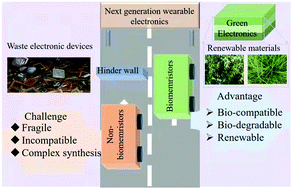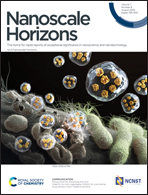Applications of biomemristors in next generation wearable electronics
Abstract
With the rapid development of mobile internet and artificial intelligence, wearable electronic devices have a great market prospect. In particular, information storage and processing of real-time collected data are an indispensable part of wearable electronic devices. Biomaterial-based memristive systems are suitable for storage and processing of the obtained information in wearable electronics due to the accompanying merits, i.e. sustainability, lightweight, degradability, low power consumption, flexibility and biocompatibility. So far, many biomaterial-based flexible and wearable memristive devices were prepared by spin coating or other technologies on a flexible substrate at room temperature. However, mechanical deformation caused by mechanical mismatch between devices and soft tissues leads to the instability of device performance. From the current research and practical application, the device will face great challenges when adapting to different working environments. In fact, some interesting studies have been performed to address the above issues while they were not intensively highlighted and overviewed. Herein, the progress in wearable biomemristive devices is reviewed, and the outlook and perspectives are provided in consideration of the existing challenges during the development of wearable biomemristive systems.

- This article is part of the themed collection: Recent Review Articles


 Please wait while we load your content...
Please wait while we load your content...